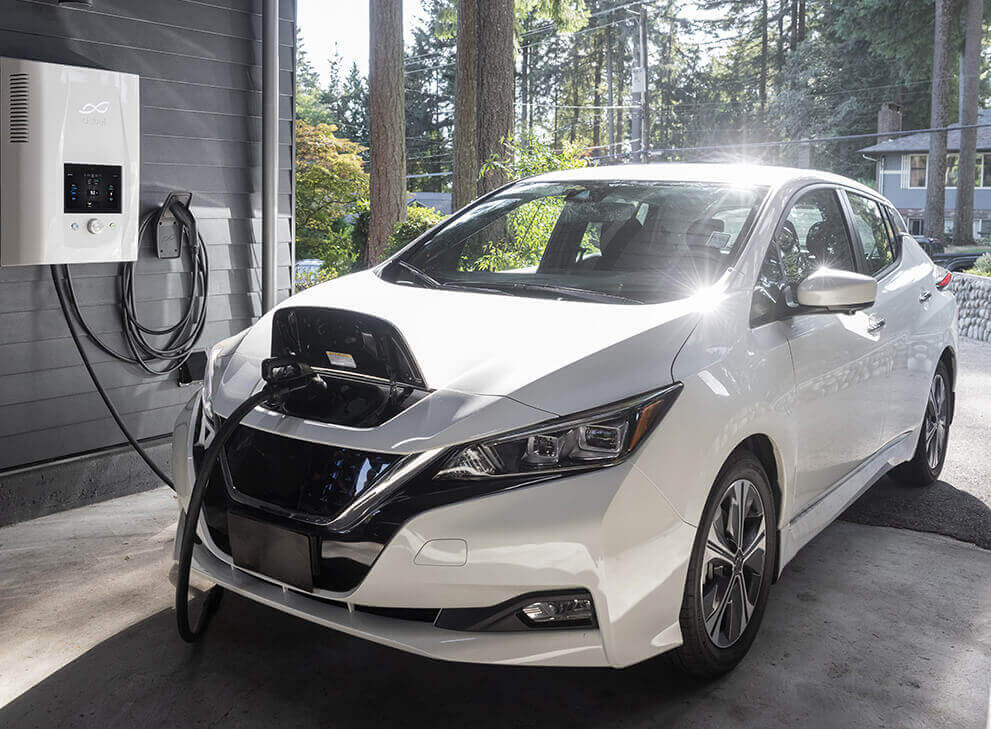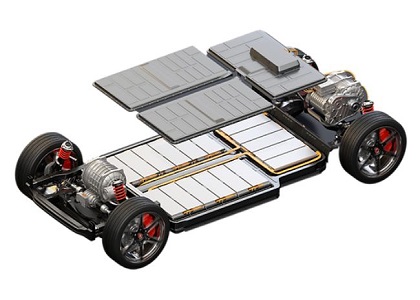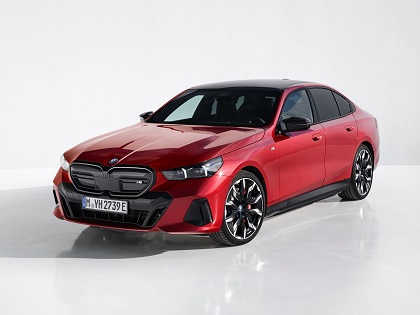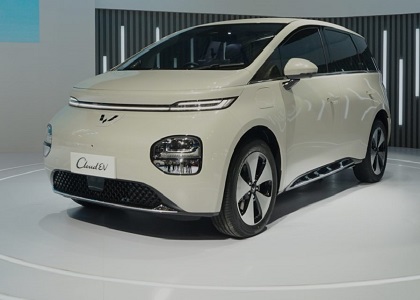
BYD’s Model 3 Competitor, the Seal, Launched & Does 0-100kmph in 3.8s
Launched at Rs. 41 lakh, the BYD Seal competes with the Tesla Model 3 and Hyundai Ioniq 6 in international markets
Introduction
BYD launched the much-anticipated Seal on March 5, 2024, marking its arrival as the third addition to BYD's expanding product portfolio. Following in the footsteps of the E6 MPV and the Atto 3 crossover/SUV, the Seal shares its platform—the e-Platform 3.0—with the latter. Available in three distinct trims—Dynamic, Premium, and Performance—the Seal caters to diverse preferences, ranging from an entry-level configuration to a top-tier, performance-oriented variant. With a competitive starting price of Rs. 41 lakh (ex-showroom) for the Dynamic trim, the Seal positions itself as an enticing option in the burgeoning EV market, here’s why.
Dimensions Perspective
Measuring at 4800mm in length, 1875mm in width, and 1460mm in height, the BYD Seal positions itself in dimensions akin to the BMW 3-Series Gran Limousine, which stands at 4823mm in length, 2068mm in width, and 1441mm in height. Notably, the Seal surpasses the BMW in height by 19mm but maintains a narrower profile by nearly 200mm, enhancing its maneuverability, at least on paper, particularly in urban environments. The standout feature, however, is its substantial 3m wheelbase, measuring precisely 2920mm. Leveraging the advantages inherent in ground-up electric vehicle design, the Seal maximizes cabin space in a smaller footprint compared to traditional gasoline vehicles. This efficiency is attributed to the more compact drivetrains of electric vehicles, requiring less space and occasionally allowing for additional storage upfront. In the case of the Seal, this translates to a 50L frunk, also known as "froot," complemented by a 400L boot at the rear. The frunk proves especially practical for storing charging cables or smaller items during extended journeys. However, aspiring buyers should note its sporty sedan profile, which results in a ground clearance of 145mm, potentially raising concerns given the varied conditions of Indian roads.
Exterior

BYD Ocean-X Concept1
Drawing inspiration from the Ocean X concept presented in 2021, the exterior design of the Seal exudes a sleek and sporty aesthetic. Starting with the sleek headlights which are U-shaped look aids in making the Seal sleek, with the main headlight module situated above, and connected to the Daytime Running Lights (DRL) below. Departing from traditional fog lamps, BYD introduces "ripple lamps" in the lower section, resembling the ripples of an ocean wave, after it has crashed ashore perhaps? Adjacent to these lamps, there seems to be an air curtain that helps direct airflow into the front wheel arch, contributing to the car's aerodynamic efficiency, reflected in its impressive Cd value of 0.219. According to BYD India’s website, “for every 0.01 reduction in Cd value, the cruising range is increased by 8km” underscoring the vital role of aerodynamics in helping the car travel longer distances between charges. Compared to the Tesla Model 3, both of them share the same Cd value at 0.219 making them both fairly aerodynamic.

BYD Seal Side Profile2
Moving to the side profile, the Seal’s short front and rear overhangs helps conceal its 4800mm overall length which is comparable to the Mercedes C-Class and BMW 3-Series Gran Limousine. There are flush door handles which pop out when you want to get in the car, again help to make it aerodynamically more efficient and they are simple to operate compared to Model 3’s door handles. Also there is thin black cladding lower down, and right below the B-pillar there are three vents that look like fish gills again to direct air to the rear of the car perhaps, we will know more when we see the car in person. As for wheels, the Dynamic variant will come with R18 225/50 tyres while the Premium and Performance variants come with R19 235/45 tyres. Lastly, the charging port is at the rear and three quarters on the right hand side.

BYD Seal Connected Tail Lights3
Moving to the rear, there are connected taillamps that have neat looking dotted LED elements which according to BYD resemble water droplets. The main taillights are between these dotted elements and have sequential lights for indicators which is a premium touch. Above the connected taillights there is the BYD lettering which unlike the Atto 3 does not spell out “Build Your Dreams” and help keep things minimalistic. Lower down, there is a blacked-out section that helps the car look sporty. However we are not sure about the two bulging vents on the side which could have been better executed as they seem to be an afterthought. Overall the front and side profile are my favorite elements of the car which help the car look sleek & sporty, plus mask the overall length of the car. Lastly, the Seal has scored an impressive 5 stars in the Euro NCAP crash test and the Australian NCAP.
Seal Water Drop Dot Matrix Lights4
Interior
Stepping into the cabin, the users are greeted with a duo of two screens– a 15.6” infotainment display on the dashboard and a 10” unit dedicated to the driver. A cool feature of the larger screen is its rotating capability where users can change its orientation between landscape (horizontal) and portrait (vertical) modes, how cool is that?! This main unit handles not just the air con but a range of car settings. However the screen will remain in landscape mode when using Android Auto or Apple CarPlay which is the only down side.

Seal Dashboard5
Continuing beneath the central infotainment screen, there are two 15W inductive charging pads. What follows below is an hourglass-shaped console, featuring a distinctive fly-by-wire, glass gear selector, and an electronic parking brake. The glass gear selector is reminiscent crystal knobs found in the latest BMW models, adding a neat touch. Descending further, there are two cupholders in front of the central storage.

Gear Selector6
Expanding on storage options, the cabin boasts not only the conventional glove box but also an additional compartment beneath the console. This hidden space reveals itself as a practical storage solution, equipped with USB-C and USB-A charging ports. This addition enhances the overall functionality of the cabin, providing versatile and convenient storage within arm's reach.

Panaromic Glass Roof7
There is a flat-bottom steering wheel with physical buttons for intuitive on-the-go control and are much more intuitive to use on the move over the touch-sensitive buttons that have proven to be fiddley on the use. The two standout features are the massive glass roof and diamond-quilted sports leather seats. The expansive glass roof, a common expectation in EVs and notably in Teslas, imparts an airy ambiance to the cabin, though its performance under the Indian sun awaits assessment. The front seats, designed with integrated head rests, exude a sporty feel while maintaining a premium touch, thanks to the intricate diamond-quilted pattern that makes its way to the rear bench.

Diamond Quilted Rear Seat8
Tech
In terms of technology, the BYD Seal stands out with wireless Android Auto capability, while Apple CarPlay is connected via wire, a fly in the ointment. The front seats boast electric adjustability, featuring heating, ventilation, and a memory function that also stores your outside rearview mirrors' settings—a thoughtful touch. Concerning driver assistance systems, the car incorporates adaptive cruise control, lane departure warning, lane keeping assist, predictive collision warning, high beam assist, front & rear cross traffic alert, front & rear cross traffic brake, driver attention warning, and automatic emergency braking for enhanced safety. The vehicle offers dual-zone climate control with a heat pump, effectively reducing energy consumption from the HVAC system during winters by drawing heat from external sources. For comfort and convenience, there is a PM2.5 filtration system ensures superior cabin air quality, heads up display (HUD), keyless entry and start, an NFC card for unlocking the car, a 12-speaker DYNAUDIO music system, a voice assistant (available only in English), and ambient lighting.
Battery Pack, Range, Performance, and Charging
The BYD Seal offers two battery pack options: 61.45kWh and 82.5kWh, with the latter available in a dual-motor setup. The Dynamic trim, equipped with the 61.45kWh usable battery pack (64kWh gross capacity), is driven by a 150kW (201hp) permanent magnet synchronous motor mounted on the rear axle, delivering a torque of 310Nm. This configuration allows for a 0-100 kmph sprint of 7.1 seconds, while achieving a range of 460kms between charges on the WLTP cycle.
The Premium version comes with 82.5kWh usable capacity and gross capacity of 84 kWh featuring a rear-mounted permanent magnet synchronous motor. With a power output of 230kW (309 hp) and 360Nm of torque, this RWD version accelerates from 0-100kmph (0-60mph) in 5.9 seconds which is no slouch. For those seeking enhanced performance, there is dual-motor, performance version that puts another 160kW (215hp) motor on the front axle, resulting in a total power output of 390kW (523hp) and 670Nm of torque. This configuration enables the Seal to achieve a remarkable 0-100kmph sprint in a claimed 3.8 seconds.
All trims employ BYD’s patented blade cells (prismatic cells) with cell-to-pack technology, eliminating the conventional individual module setup found in most other EVs. The battery chemistry, utilizing LFP, has better thermal stability and longer cycle life compared to NMC cells. In terms of range, the Premium trim excels, covers 570 kms (combined) between charges on the WLTP cycle, while the Performance version delivers a claimed 520km on the same testing protocol.
Utilizing a Level-3 DC fast charger at 150kW peak speed (applicable to Premium and Performance trims), the vehicle can be charged from 10-80% SoC in 37 minutes, with a 30-minute time frame for the 30-80% range. With an 11kW onboard charger, Level-2 charging takes approximately 8.6 hours to reach 100% SoC, operating at a peak speed of 11kW.
Notably, the Dynamic version has slightly different charging specifications, achieving a peak rate of 110kW on a Level-3 DC fast charger and a peak rate of 7kW for Level-2 charging. The charging port features a CCS Type-2 for Level-3 DC fast charging and Mennekes for both Level-2 and Level-1 charging which has become a standard for most EVs in India. Lastly, it comes with V2L functionality which can be used to run and charge appliances on a picnic.
However the V2L mobile power supply unit, 7kW home charger and its installation, and the 3.3kW portable charger box (charging cable) do not come standard with price. They have to be purchased separately. The charging cable is a required accessory that should have been included in the price and not have to be purchased separately.
On the subject of warranty, the Seal comes with an industry standard 8 year/160000km warranty for the battery pack, and 8 year/150000km on the electric motor and motor controller.
Outro
The BYD Seal made its debut on 5th March 2024, with a starting price of Rs. 41 lakh, ex-showroom, for the Dynamic variant. When compared to its internal combustion engine counterparts such as the Mercedes C-Class and the BMW 3-Series Gran Limousine, it stands out as a more economical choice, boasting a price advantage of Rs. 16 lakh and Rs. 19 lakh ex-showroom, respectively. This substantial cost difference positions the Seal as an attractive option in its segment. In the realm of electric vehicles, particularly against contenders like the Hyundai Ioniq 5 and the Kia EV6, the Seal’s price tag is Rs. 5 lakh lower compared to the Ioniq 5 and approximately Rs. 20 lakh compared to the Kia EV6. Even the Premium and Performance variants are competitively priced at Rs. 45.55 lakh and Rs. 53 lakh, both ex-showroom given the Performance version offers remarkable performance for its price, achieving a 0-100 kmph sprint in just 3.8 seconds, surpassing cars that come with a significantly higher price tag. This enticing proposition has garnered the Seal 200 bookings, making it a noteworthy consideration for those in the market for an electric SUV in this category.
Image Courtsey
Thumbnail and Title Image: BYD Europe
1BYD Ocean-X Concept: BYD Website
2BYD Seal Side Profile: BYD India Website
3BYD Seal Connected Tail Lights: BYD Website
4Seal Water Drop Dot Matrix Lights: BYD India Website
5Seal Dashboard: BYD India Website
6Gear Selector: BYD India Website
7Panaromic Glass Roof: BYD India Website
8Diamond Quilted Rear Seat: BYD India Website






March 12, 2024
Category: